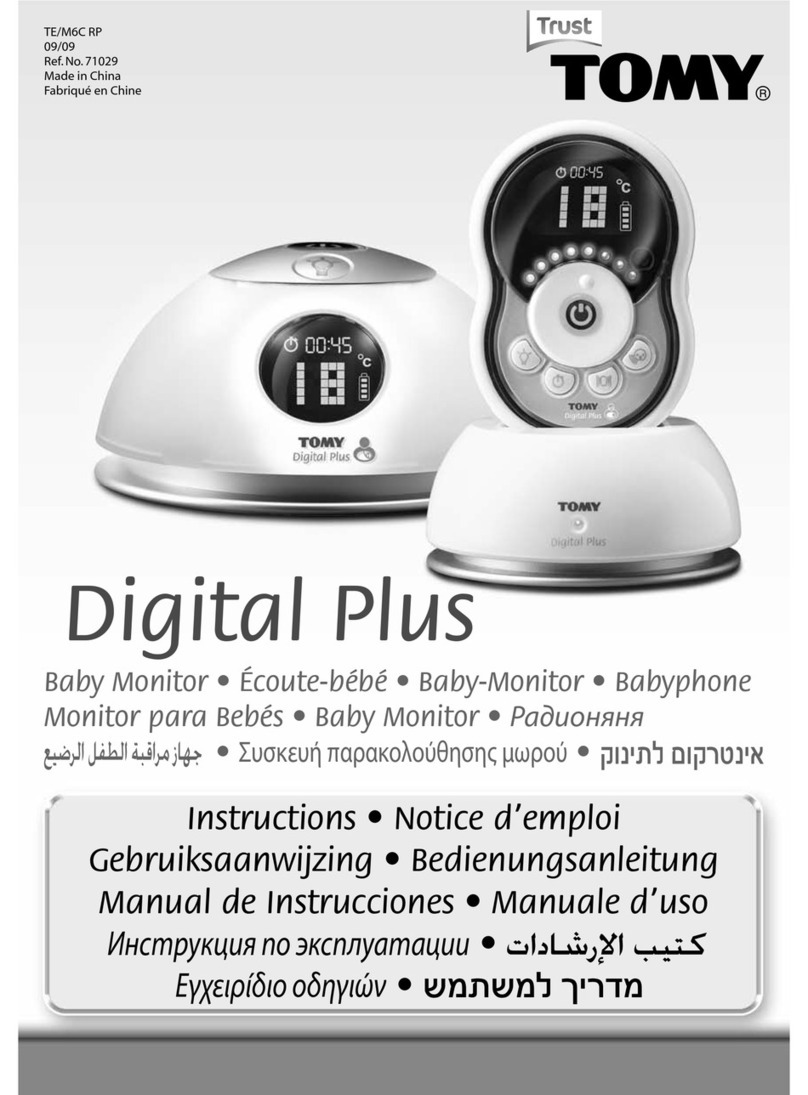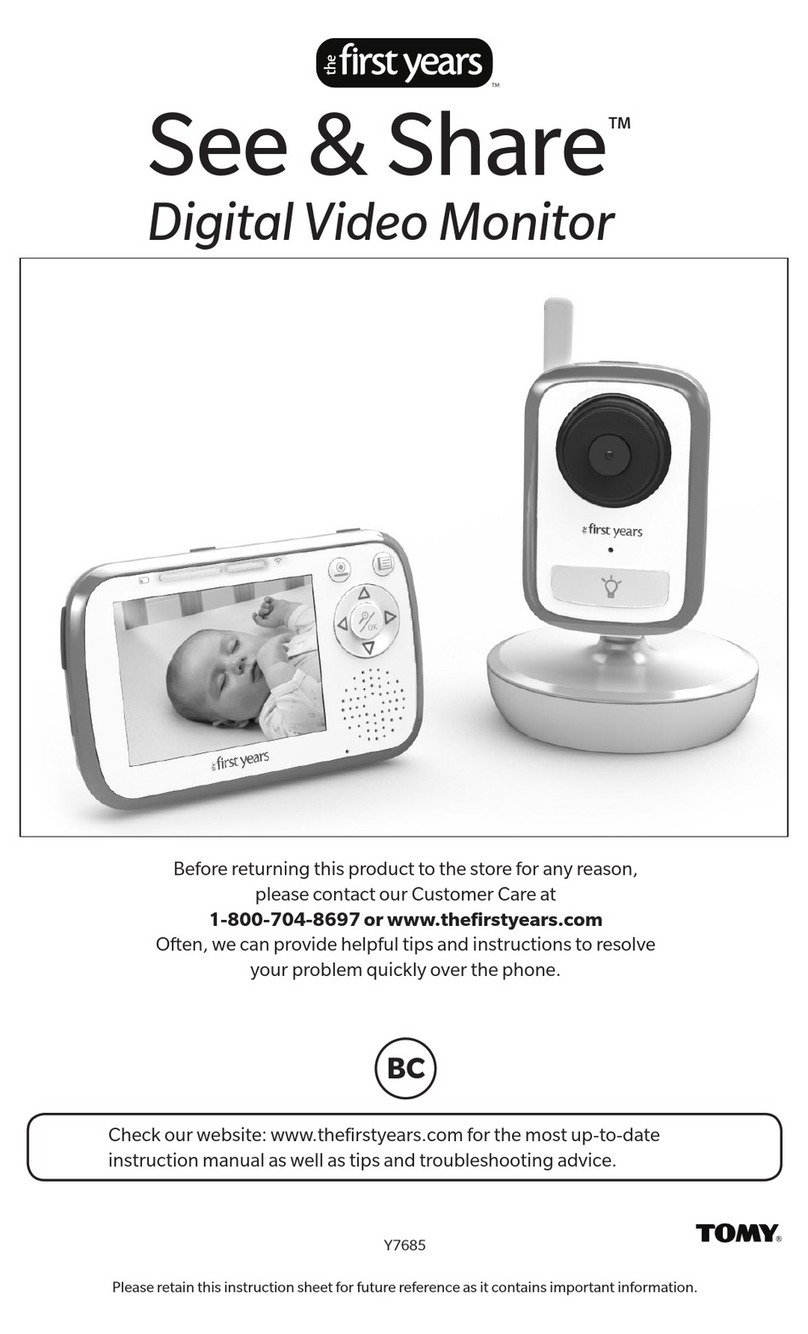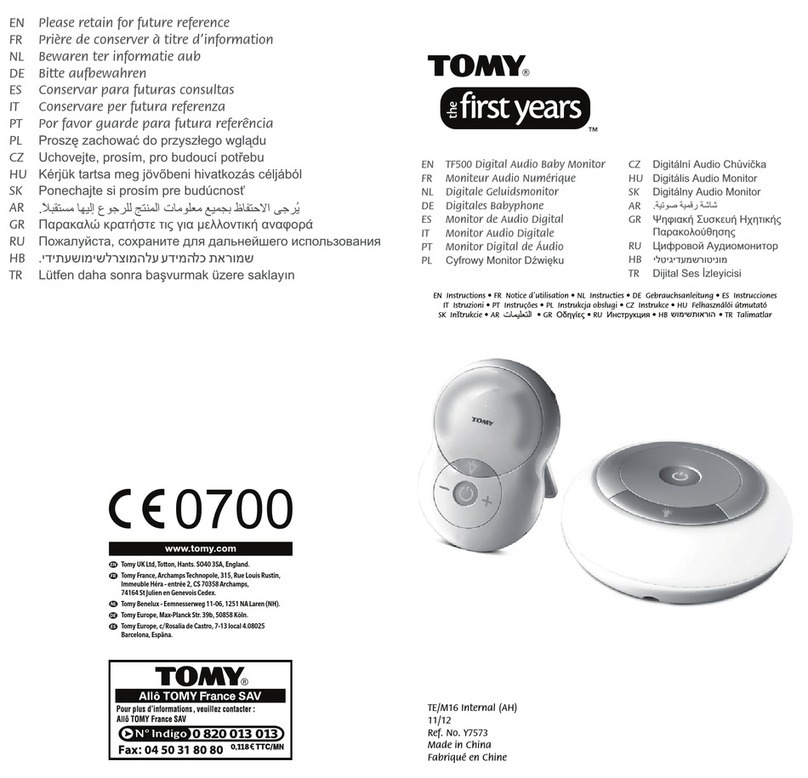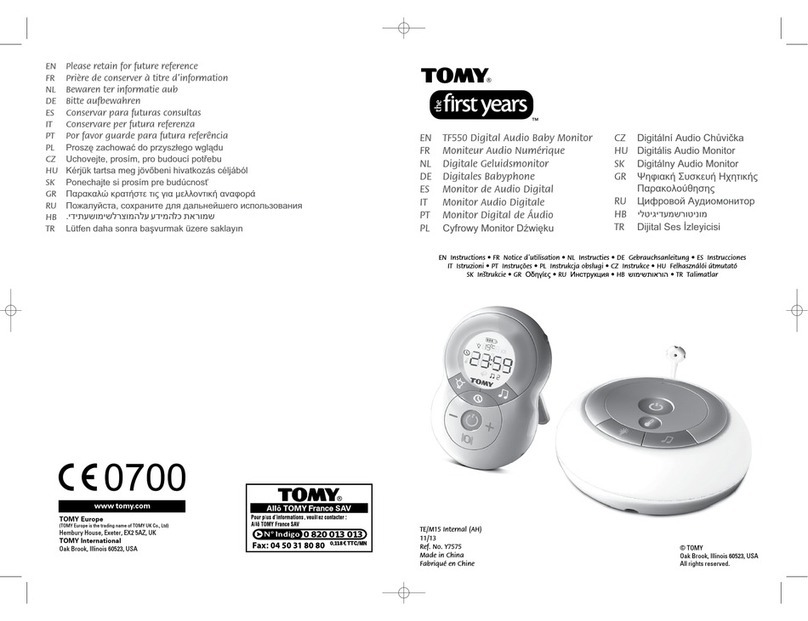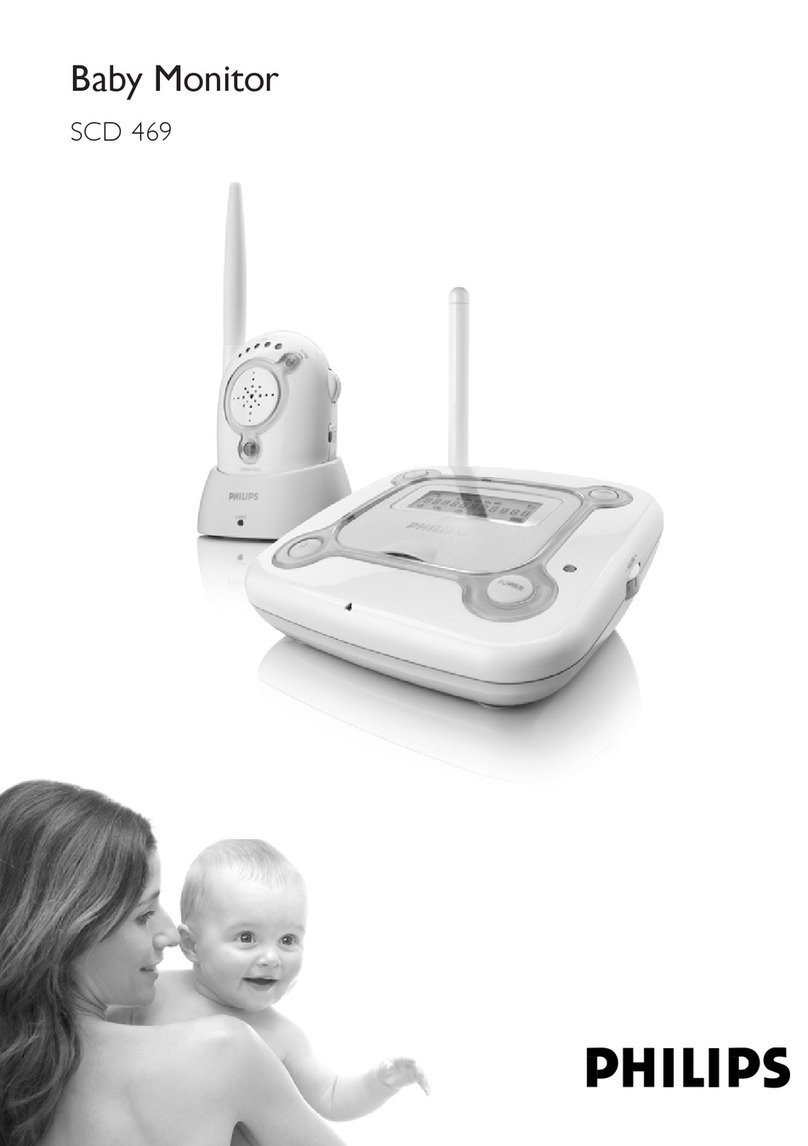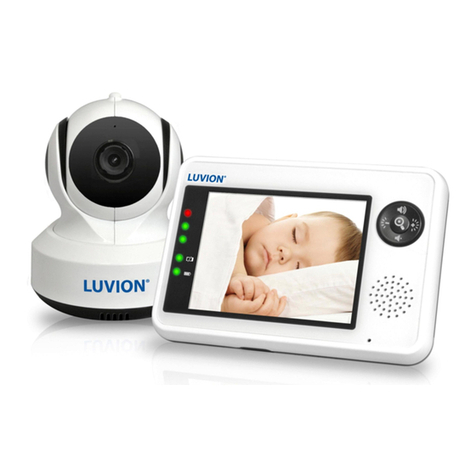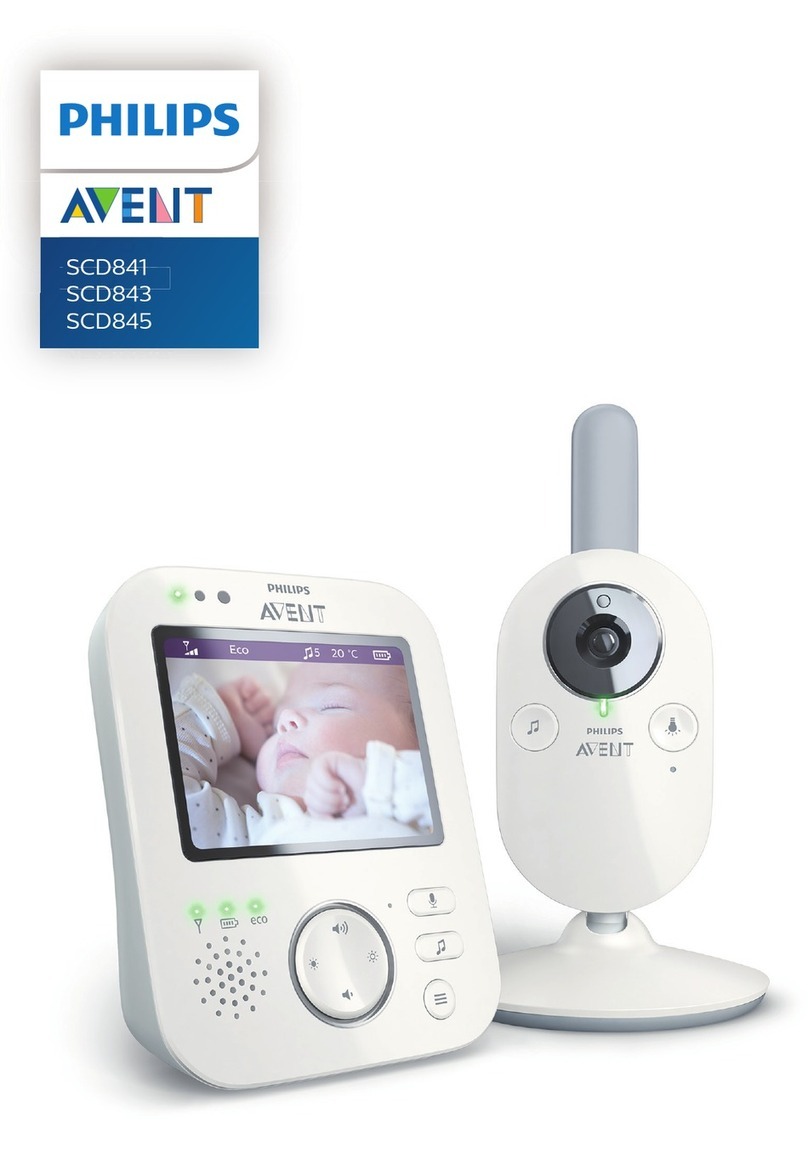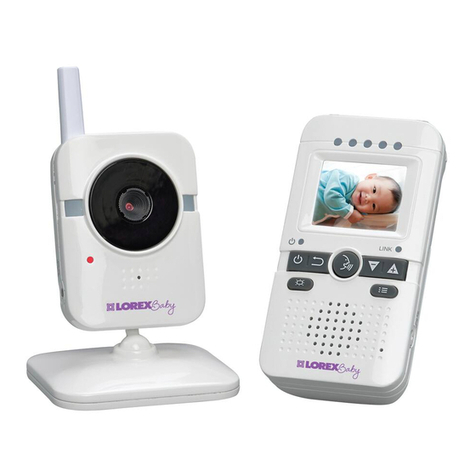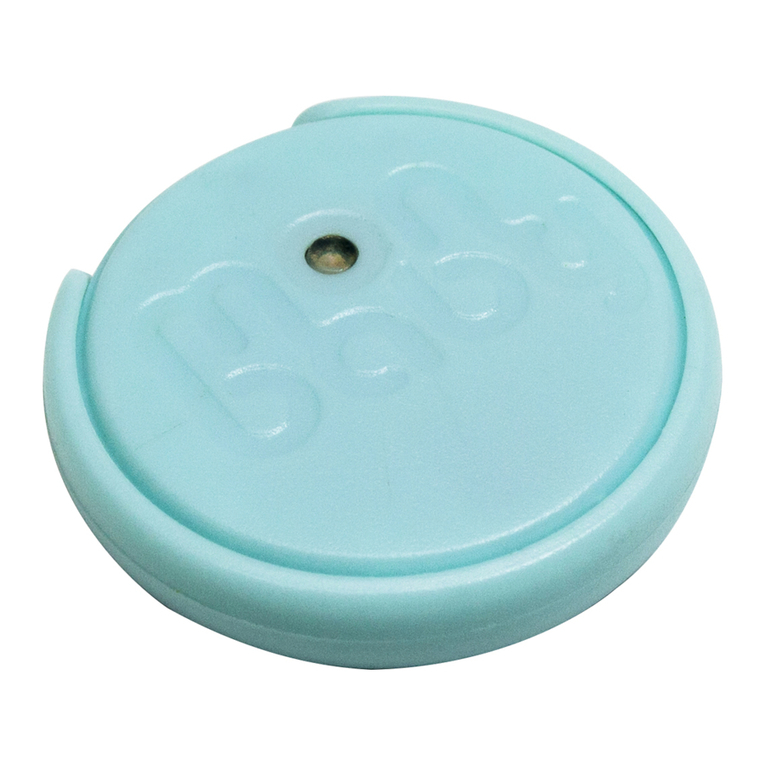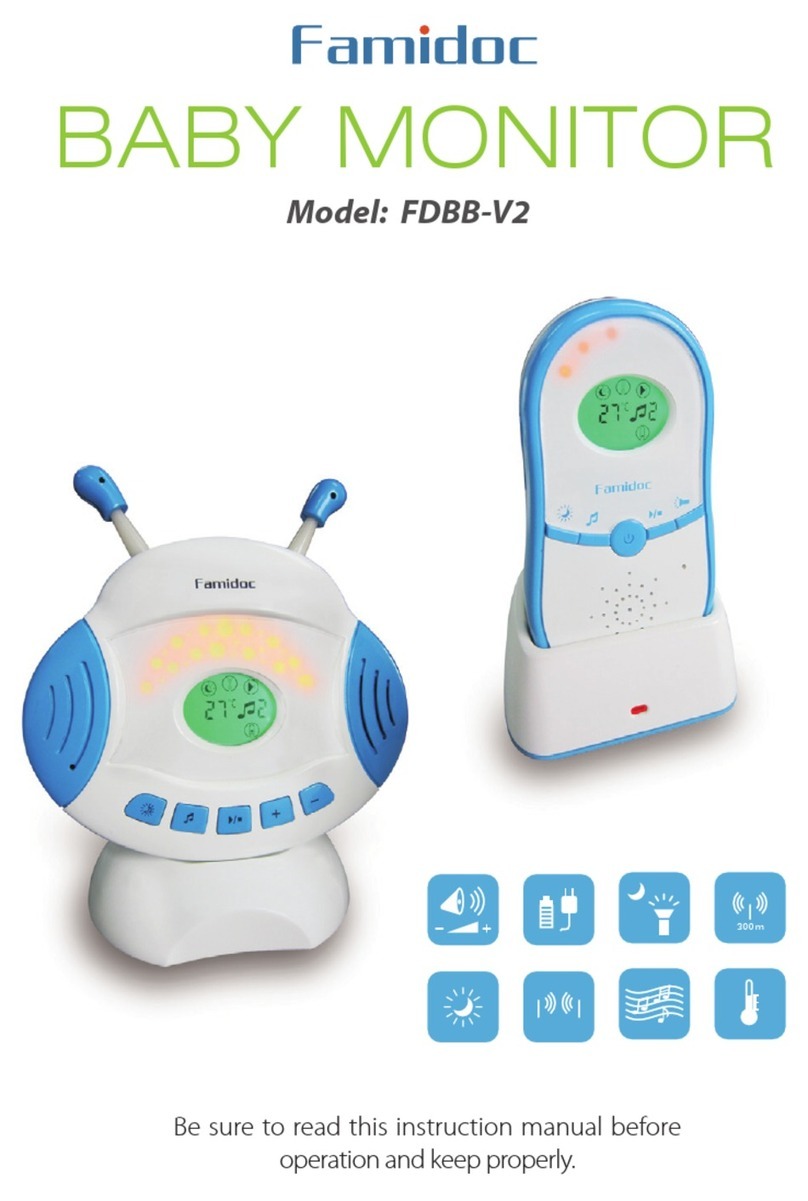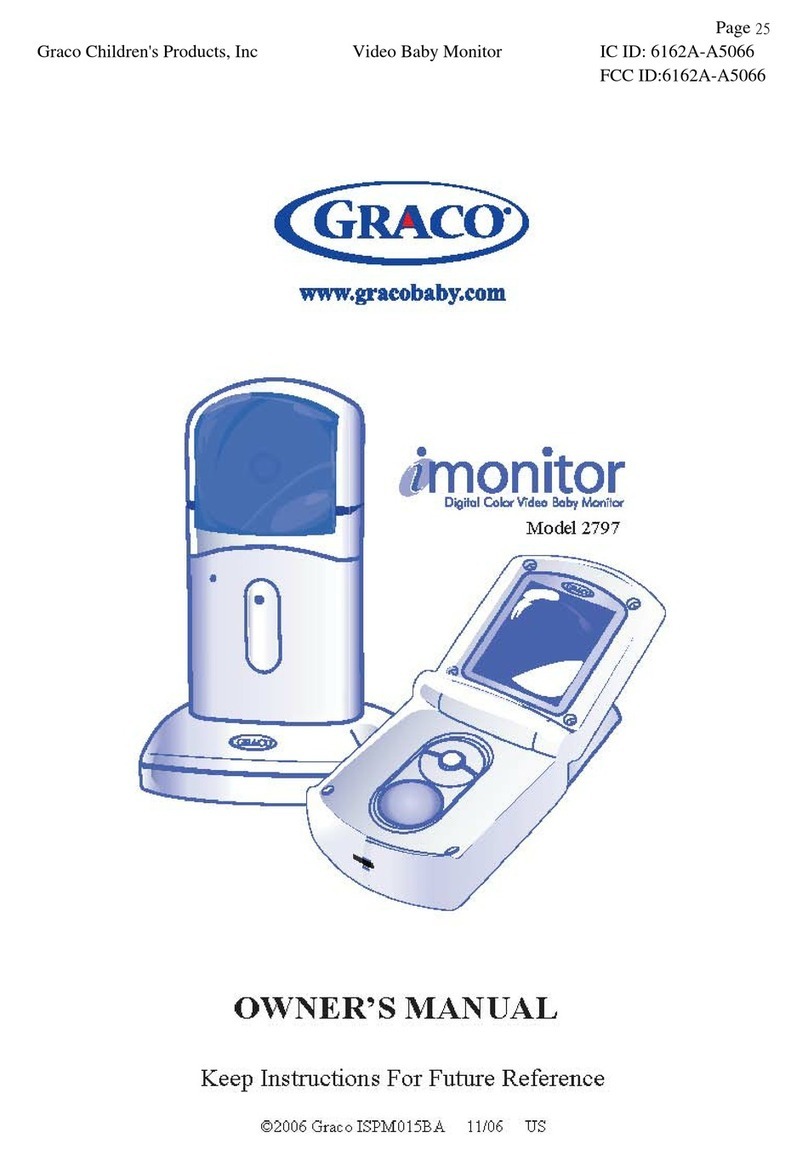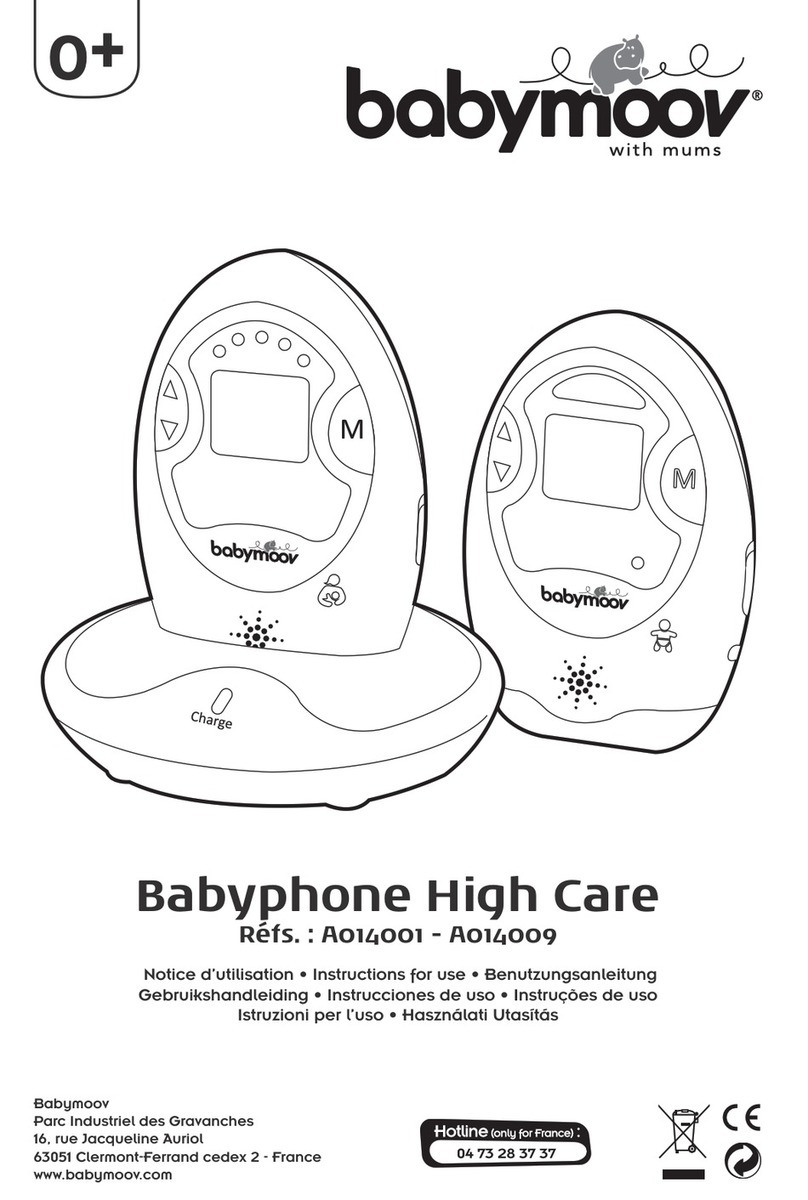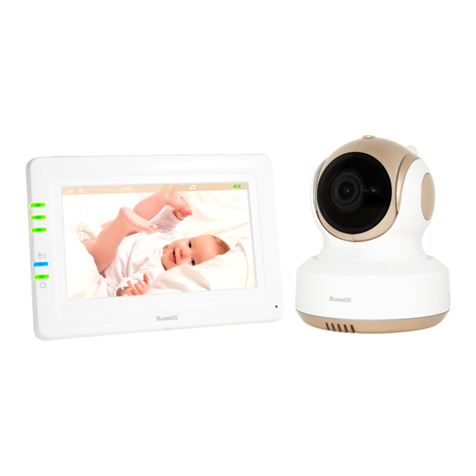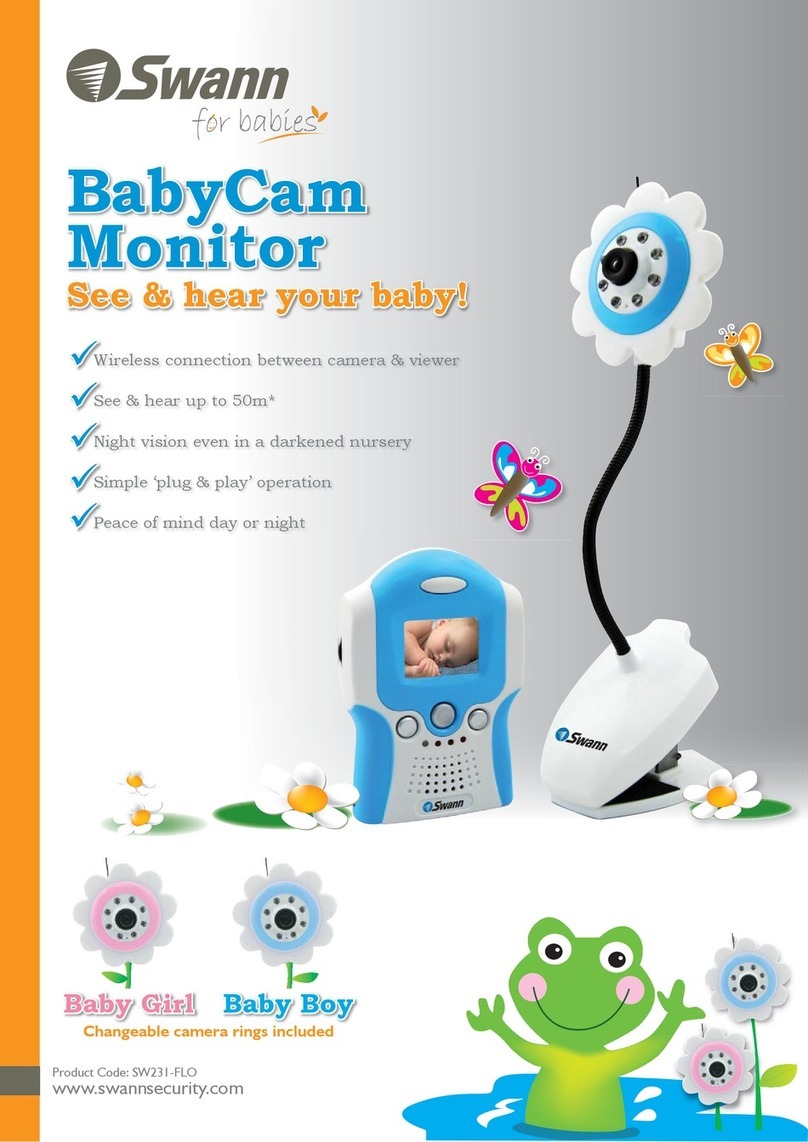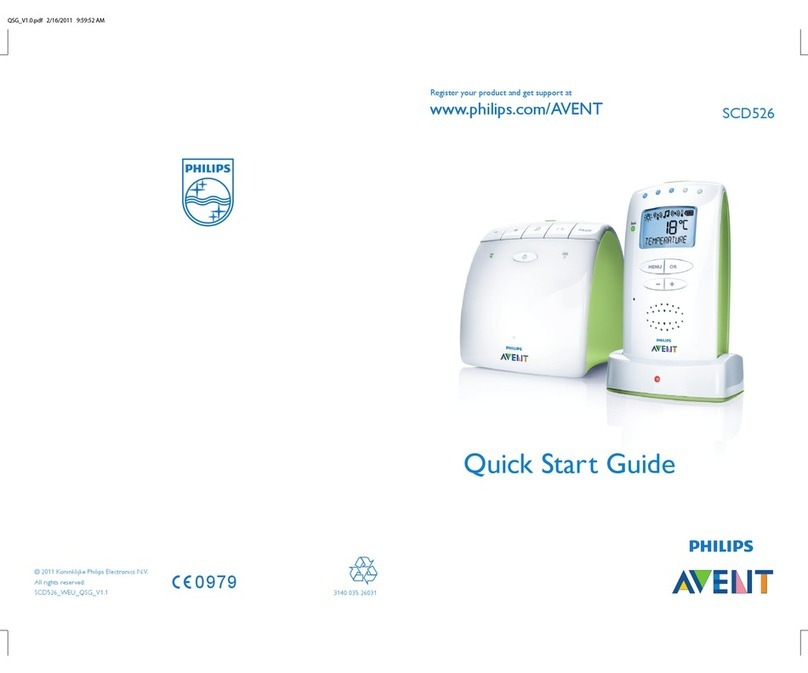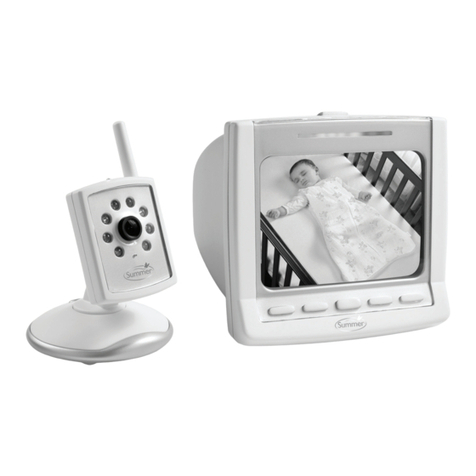
●For best performance we recommend both units are operated using the
mains adaptors supplied (Fig 1).
●Simply plug each adaptor into their respective units and then into a
convenient mains outlet. Switch on the mains outlet. The red ‘on’ light
on the Parent and Baby unit will automatically illuminate to show you they
are functioning.
IMPORTANT
●Under no circumstances should the Tomy Walkabout Classic
adaptors be used with any other equipment
●No other adaptors should be used with your Walkabout Classic
units.
●Be careful not to position the adaptors where a child is likely to
use it as a step. Putting weight on the adaptor whilst it is plugged
in could damage the unit.
●Each unit requires 4 x AA (LR6) batteries which are not included.
Alkaline batteries are recommended for optimum performance and
maximum operating time.
●The battery compartment is at the back of each unit and can be opened
using a screwdriver (Fig 2). Insert the batteries making sure the
‘+’ and ‘-’ are positioned as the diagram in the battery compartment
shows. Re-fit the compartment covers on both units.
CAUTION WHEN INSERTING BATTERIES.
Take special care to ensure batteries are inserted correctly, observing
(+) and (-) marks on battery and product. Removal and replacement of
batteries should be carried out by an adult or under adult supervision.
Do not attempt to recharge non-rechargeable batteries. Removal and
recharging of rechargeable batteries should be carried out by an adult
or under adult supervision. Avoid short circuiting the contacts in the
battery compartments or the battery terminals. Remove exhausted
batteries from product. Do not mix old (used) and new batteries or
batteries of different types, eg. rechargeable and alkaline. Do not
attempt to power battery products by the introduction of mains supply
or separate power supplies. Dispose of exhausted batteries safely, and
never dispose of batteries in a fire. Remove batteries from product
after use or if storing for long periods. Periodically examine product
for signs of damage to electrical parts and do not use until damage has
been properly examined. Please retain the above information for
future reference.
●Set both units to Channel A. This setting need not be changed unless
interference occurs (e.g. from a neighbour’s monitor). If so, change the
settings on BOTH units to Channel B. If interference still occurs please
refer to the ‘Problem Solving Guide’ found on the back page.
IMPORTANT
●Even if the two units are on different Channels, it may still be possible
for the Parent Unit to pick up signals from the Baby Unit if they are
close together, so you may think both units are on the same Channel.
Always check to make sure both units are on the same Channel.
For best performance we recommend that the Baby Unit is used via the
mains adaptor supplied.
●Using mains or battery power, switch the unit to ‘on’ by using the slide
switch on the side.
●Place the unit no more than 3 metres (10 feet) away from your baby.
Continuous Monitoring.
By switching the unit to ‘on’ will allow you to continuously hear all of your
baby’s sounds.
Low battery warning
●The red ‘on’ light dims when batteries are low.
Positioning
●The Baby Unit is designed to be stood upright on its wide base.
IMPORTANT
●Make sure that neither the Unit or the adaptor lead is within reach
of your baby
●Do not use the looped aerial as a carrying handle.
The Parent unit is the ‘receiver’. This unit ‘receives’ sounds from the Baby
unit, so you can hear your baby. For best performance we recommend that
the Parent’s Unit is used via the mains adaptor supplied.
Monitoring options
There are two monitoring options to choose from.
1) Sound and Light - Turn on the light display by moving the button at the
side of the unit to ‘on’, and ensure you can properly hear baby’s sounds
by turning up the volume via the Rotary Volume Control on the side of the
unit.
SETTING UP THE PARENT UNIT
INSERTING BATTERIES (FOR PORTABLE USE)
SETTING UP THE BABY UNIT
SELECTING A CHANNELUSING THE ADAPTORS (FOR USE ON THE MAINS)
FIG 1



